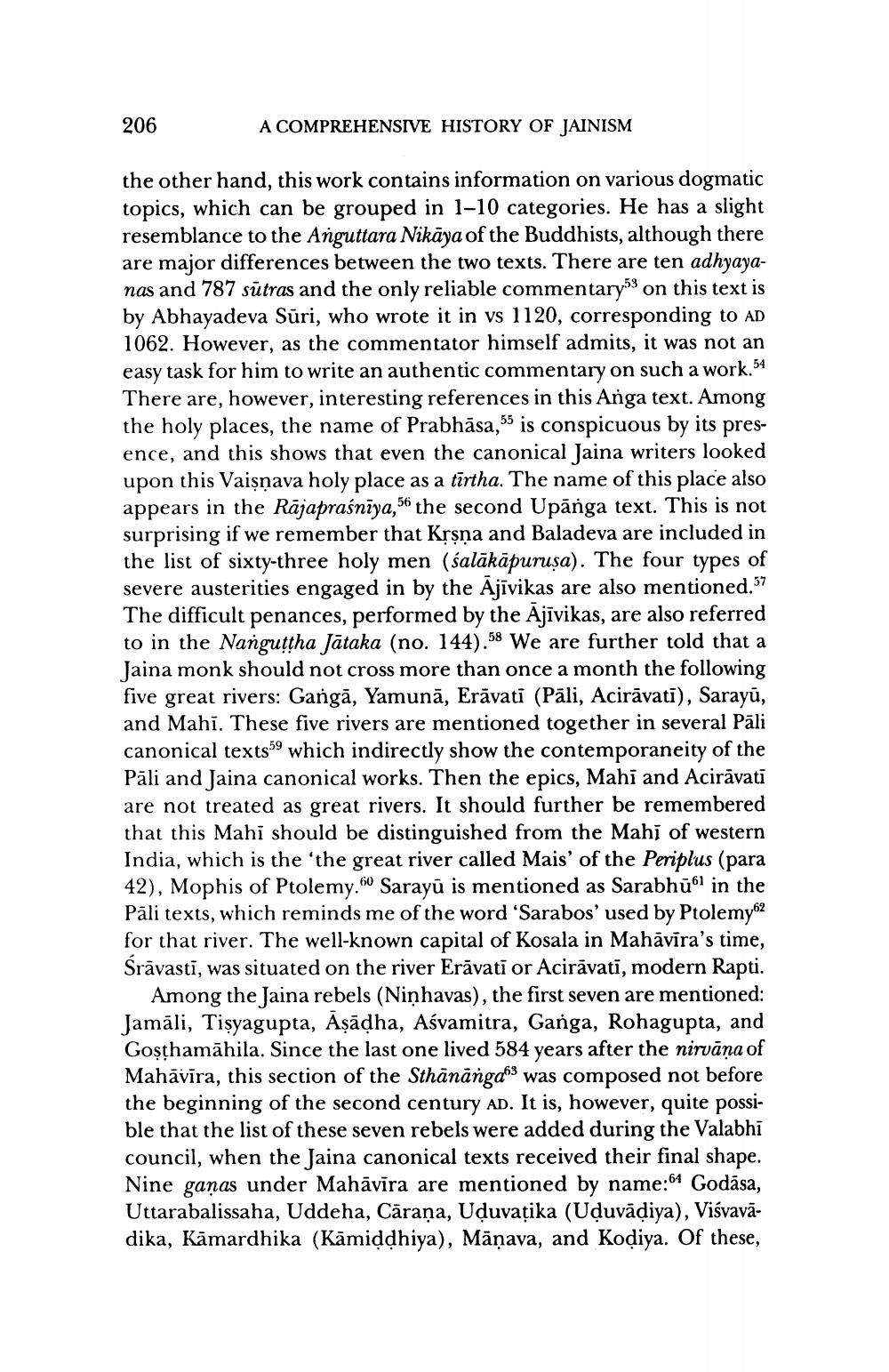________________
206
A COMPREHENSIVE HISTORY OF JAINISM
the other hand, this work contains information on various dogmatic topics, which can be grouped in 1-10 categories. He has a slight resemblance to the Anguttara Nikāya of the Buddhists, although there are major differences between the two texts. There are ten adhyayanas and 787 sūtras and the only reliable commentary on this text is by Abhayadeva Sūri, who wrote it in vs 1120, corresponding to AD 1062. However, as the commentator himself admits, it was not an easy task for him to write an authentic commentary on such a work.54 There are, however, interesting references in this Anga text. Among the holy places, the name of Prabhāsa, 55 is conspicuous by its presence, and this shows that even the canonical Jaina writers looked upon this Vaisnava holy place as a tirtha. The name of this place also appears in the Rajapraśniya, 56 the second Upānga text. This is not surprising if we remember that Krsna and Baladeva are included in the list of sixty-three holy men (salākāpuruṣa). The four types of severe austerities engaged in by the Ajīvikas are also mentioned.57 The difficult penances, performed by the Ajīvikas, are also referred to in the Nanguttha Jātaka (no. 144).58 We are further told that a Jaina monk should not cross more than once a month the following five great rivers: Gangā, Yamunā, Erāvati (Pāli, Acirāvati), Sarayū, and Mahi. These five rivers are mentioned together in several Pāli canonical texts59 which indirectly show the contemporaneity of the Pāli and Jaina canonical works. Then the epics, Mahi and Acirāvati are not treated as great rivers. It should further be remembered that this Mahi should be distinguished from the Mahī of western India, which is the 'the great river called Mais' of the Periplus (para 42), Mophis of Ptolemy.to Sarayū is mentioned as Sarabhū6) in the Pāli texts, which reminds me of the word 'Sarabos' used by Ptolemy62 for that river. The well-known capital of Kosala in Mahāvira's time, Srāvastī, was situated on the river Erāvati or Acirāvati, modern Rapti.
Among the Jaina rebels (Niñhavas), the first seven are mentioned: Jamāli, Tișyagupta, Āsādha, Aśvamitra, Ganga, Rohagupta, and Goșthamāhila. Since the last one lived 584 years after the nirvāņa of Mahāvīra, this section of the Sthānānga63 was composed not before the beginning of the second century AD. It is, however, quite possible that the list of these seven rebels were added during the Valabhi council, when the Jaina canonical texts received their final shape. Nine gaņas under Mahāvīra are mentioned by name:64 Godāsa, Uttarabalissaha, Uddeha, Cäraņa, Uduvaţika (Uduvādiya), Viśvavādika, Kamardhika (Kāmiddhiya), Māņava, and Kodiya. Of these,




